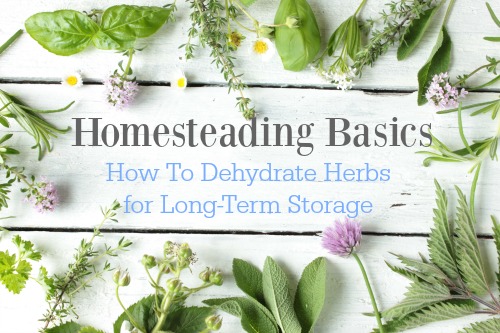
To enjoy these herbs year round, many choose to dehydrate them when they are at the peak in freshness and combine them to make their own spices and even homemade tea blends. Can you imagine how much money you could save at the grocery store by implementing this into your pantry?
How To Dehydrate Herbs for Long-Term Storage
Dehydrating herbs and other leafy greens is one of the easiest items to dry for long-term use. All you really need is a constant stream of air. You don’t necessary have to own a food dehydrator because herbs can dry naturally from the air, but it does help with even drying.
Here are some steps to get started:
- Prep herbs for drying. Wash and place herbs evenly on a drying rack and ensure that enough space is made for proper air flow.
- Set temperature and time according to the directions on your dehydrator.
- Ensure that herbs are 95% dehydrated for long-term storage.
Here are some great spice mixes to start adding to your pantry!
Cajun Seasoning
- 1/3 cup salt
- 1/4 cup paprika
- 1 tablespoon onion powder
- 1 tablespoon garlic powder
- 1 tablespoon ground black pepper
- 1 tablespoon basil
- 1 tablespoon dried oregano
- 1 tablespoon ground coriander
- 1/2 teaspoon cayenne pepper
- 2 teaspoons dried thyme
- 1/4 teaspoon cumin
- 1/4 teaspoon white pepper
Chili Powder
- 2 tablespoons paprika
- 2 teaspoons dried oregano
- 1 1/2 teaspoon ground cumin
- 1 1/4 teaspoon garlic powder
- 1 1/4 teaspoon cayenne pepper
- 1 teaspoon onion powder
French Herb Mix
- 3 tablespoons marjoram
- 3 tablespoons dried thyme
- 3 tablespoons savory
- 2 tablespoons garlic powder
- 1 teaspoon dried basil
- 1 teaspoon dried rosemary
- 1 teaspoon sage
- 1/2 teaspoon ground fennel seed
Chili Powder
- 2 tablespoons paprika
- 2 teaspoons dried oregano
- 1 1/2 teaspoons garlic powder
- 1 1/4 teaspoons ground cumin
- 1 1/4 teaspoon cayenne pepper
- 1 teaspoon onion powder
Storing Dehydrated Herbs
Herbs can be dehydrated to store for longer periods, but storage is important for any preserved food, and dehydrated foods are no exception. Store either in heavy-duty zippered bags in a metal container, or store in dry, sterile, glass jars. For long-term storage, I recommend using Mylar bags.
As I stated previously, before storing, you want to ensure that your food is 95% or more dehydrated because the more moisture your food has the more likely molds and microorganisms can grow. Like all emergency food sources, ensure that you keep your dehydrated food away from natural elements.
“Best Used By” Guidelines for Dehydrated Food
- Spices – 1-2 years
- Vegetables/Fruits – Up to 12 months
- Meats – Best at 1-2 months, but can be stored for 6 months.
We are all looking for frugal ways to bulk up our preparedness pantries. Using herbs is a great way to do that. Some of our favorite herbs we love to grow in our garden can be utilized to make long-term herbal seasonings to use year round. So, what are you waiting for? It’s time to start dehydrating!
This article was originally published at Ready Nutrition™ on January 30th, 2017






